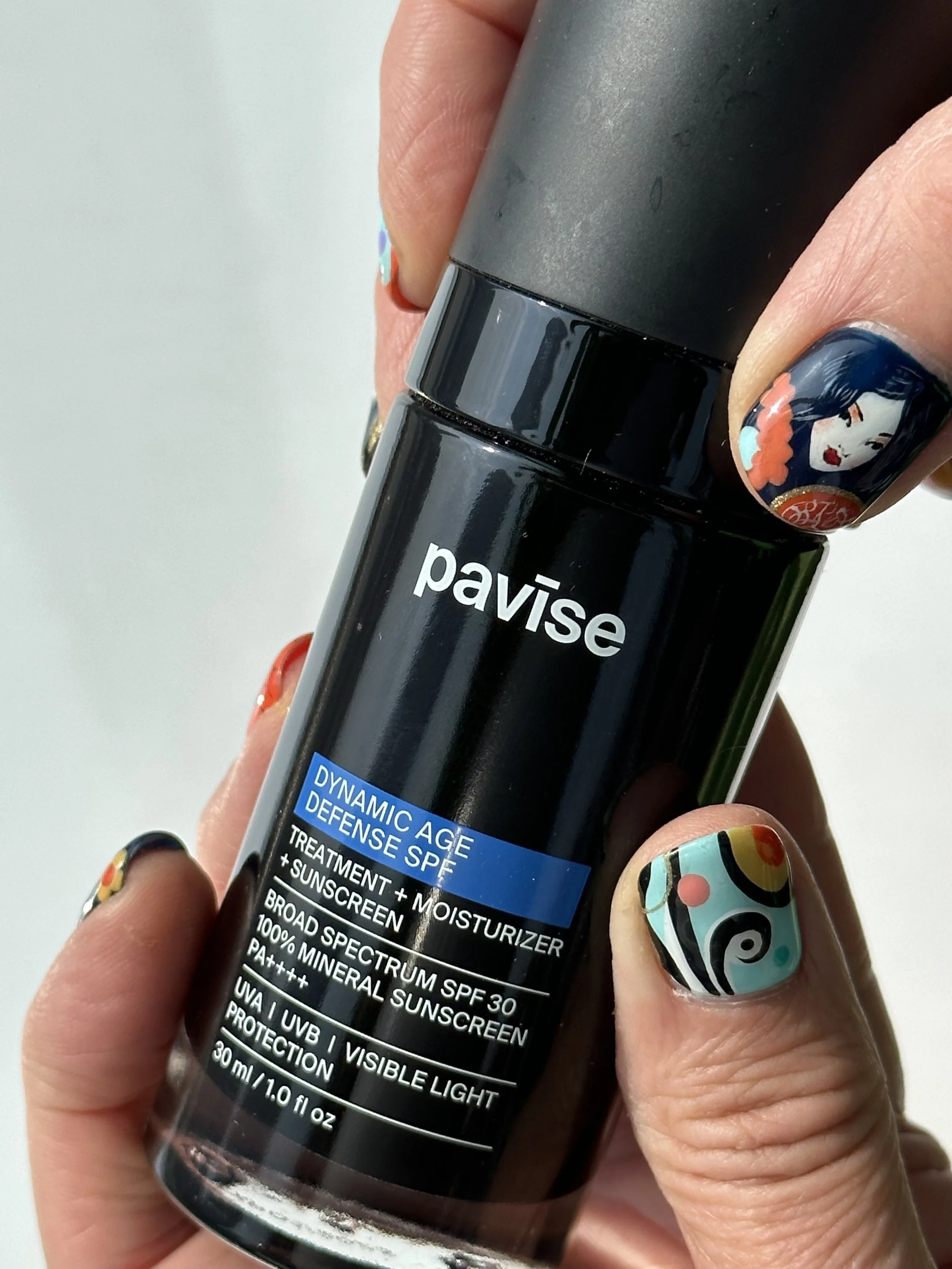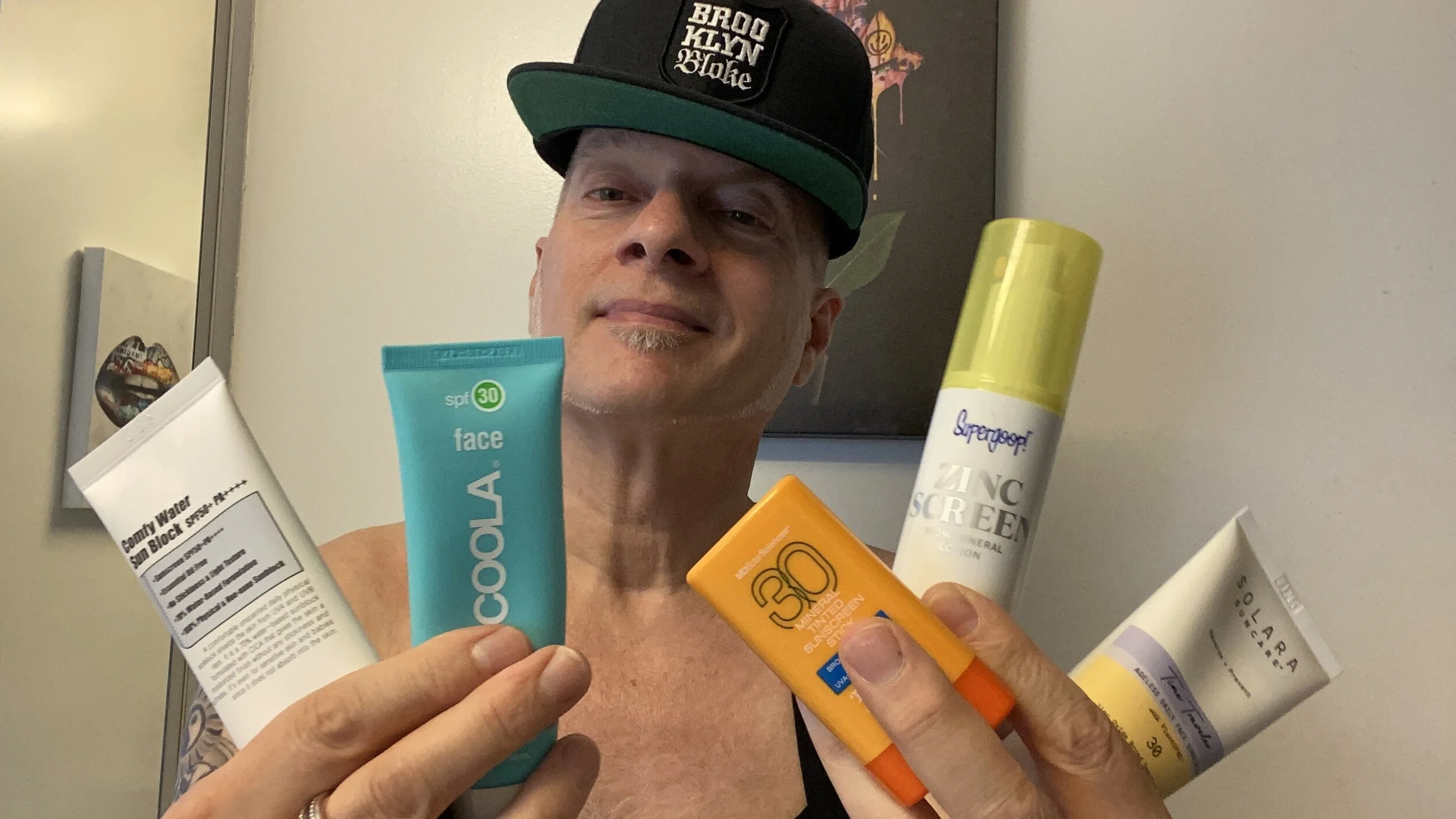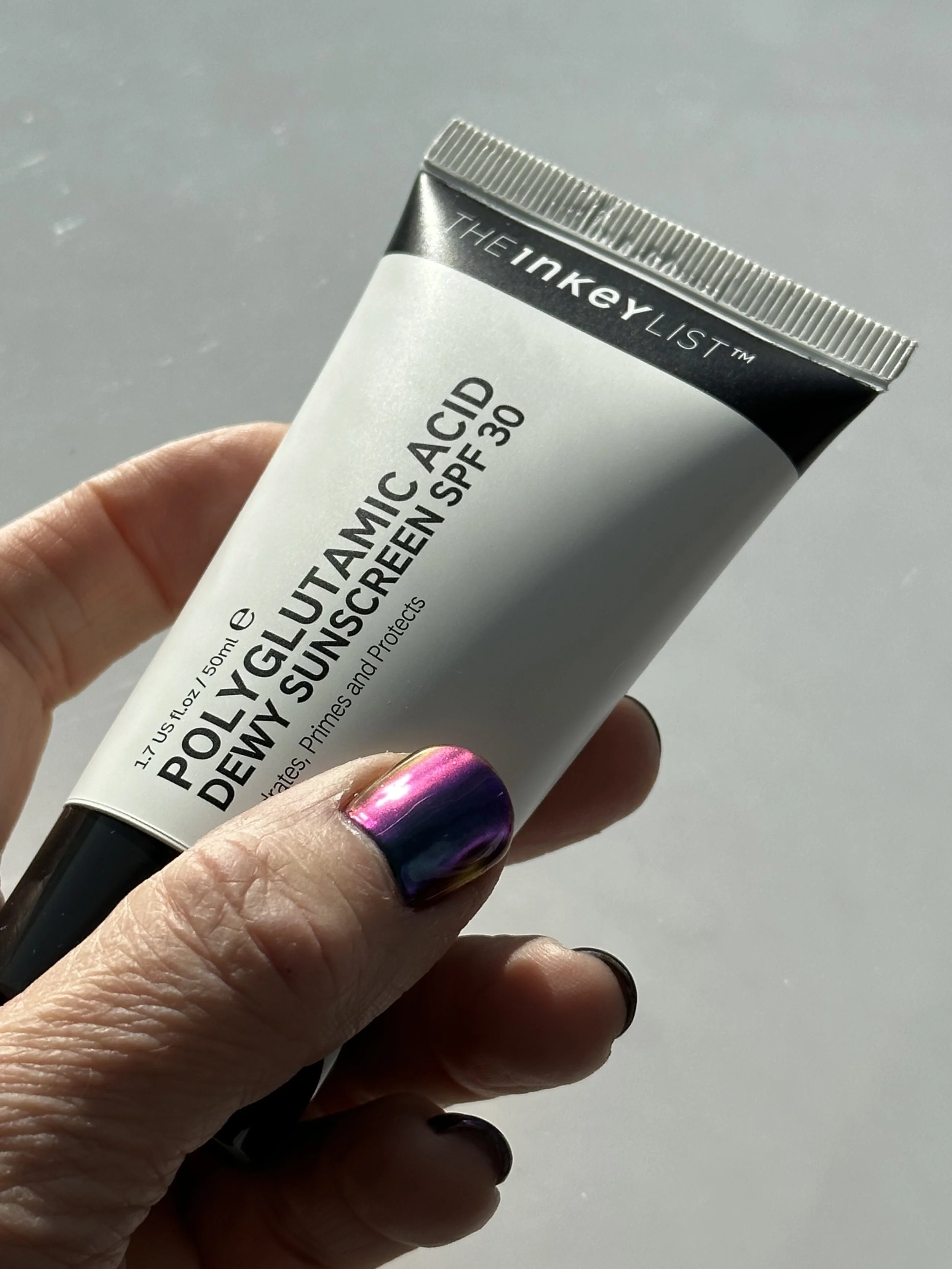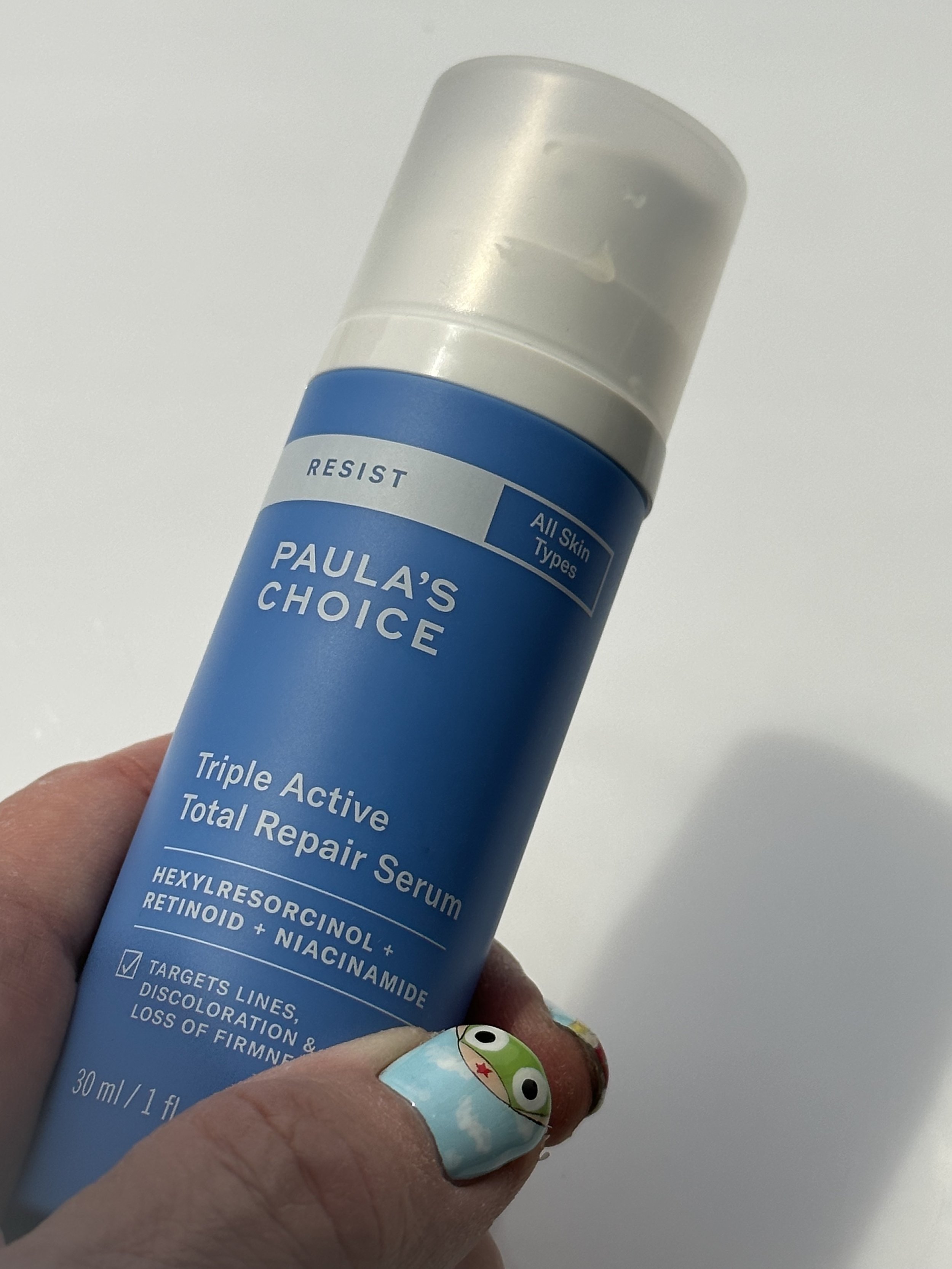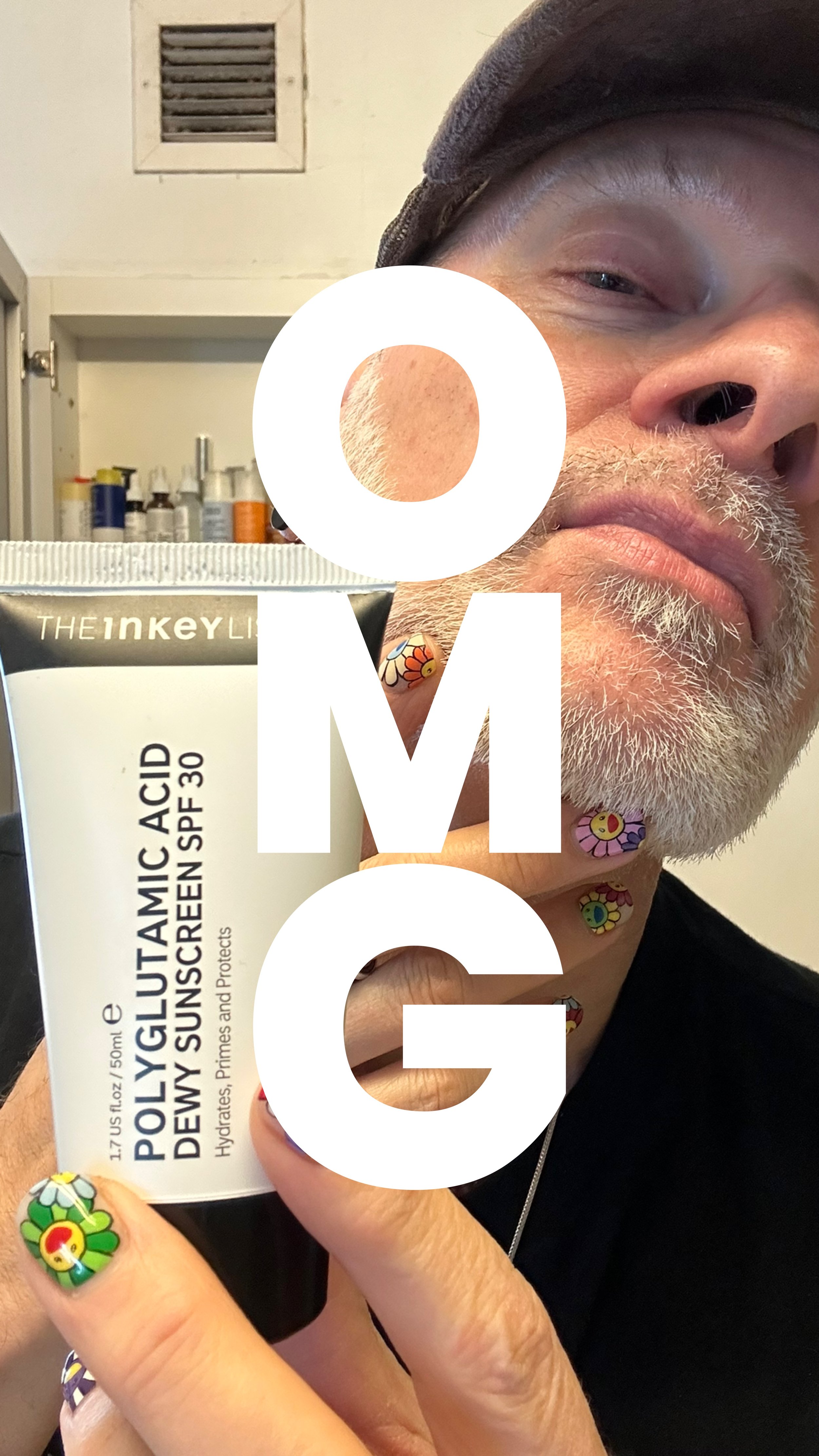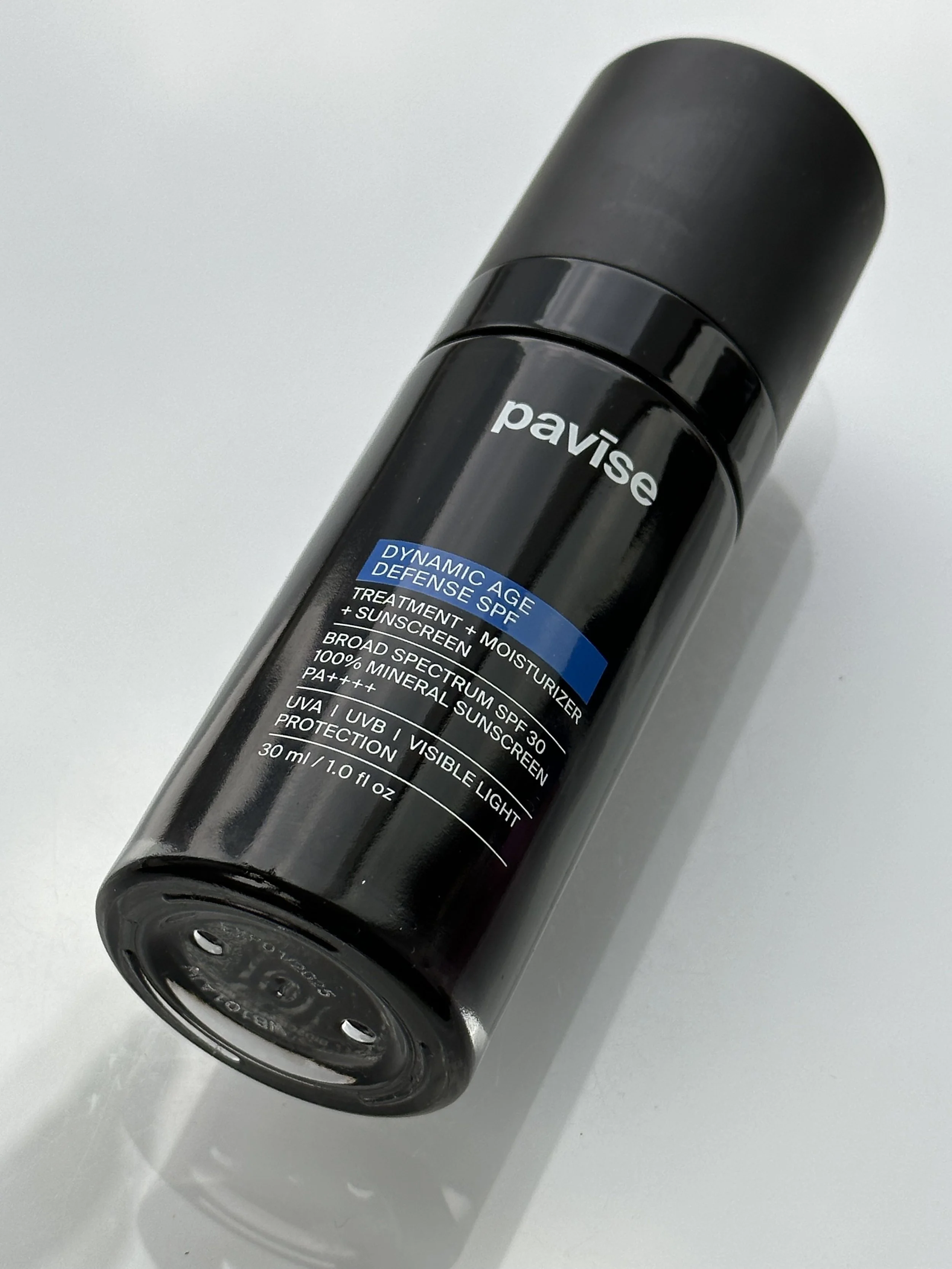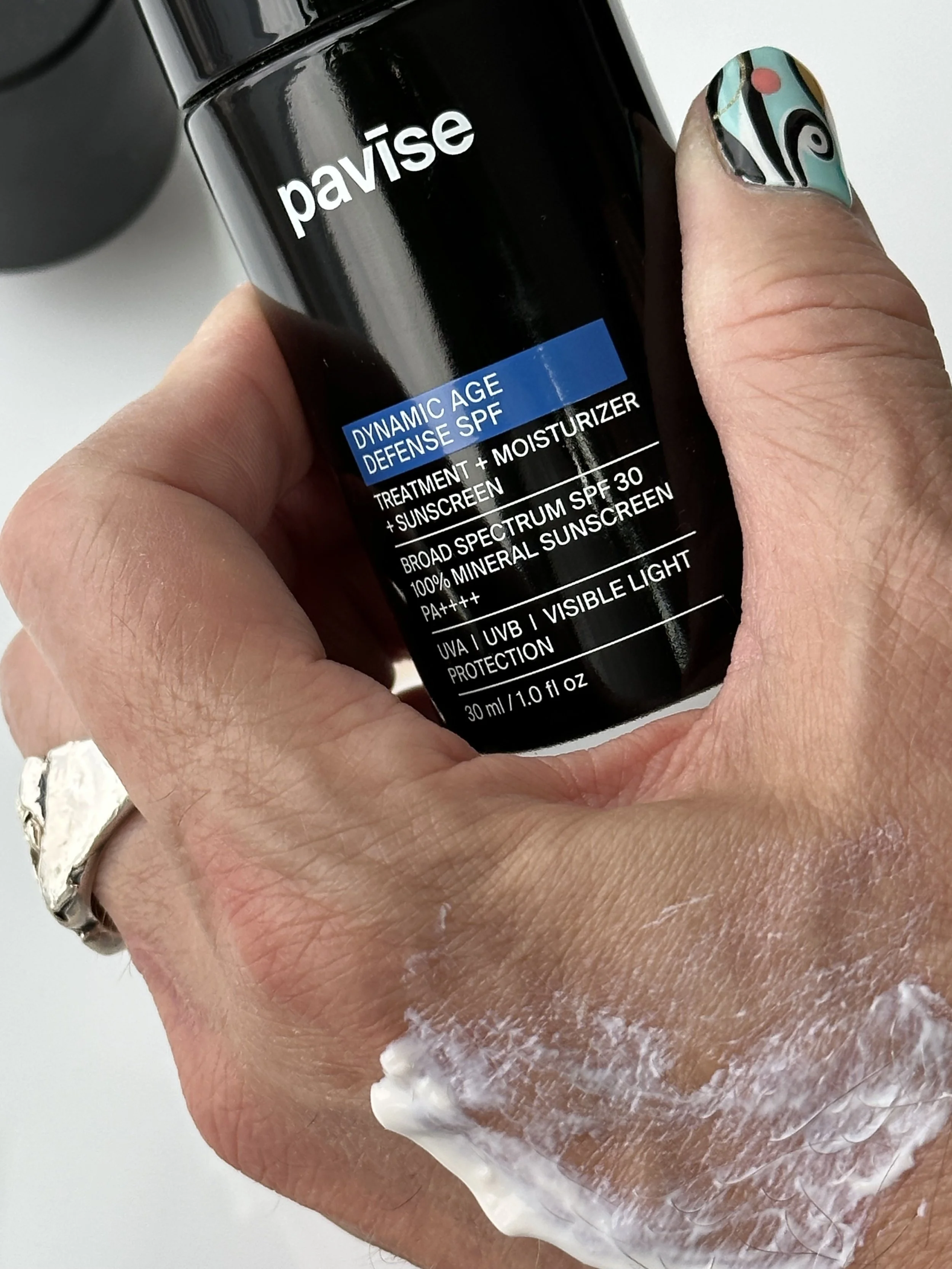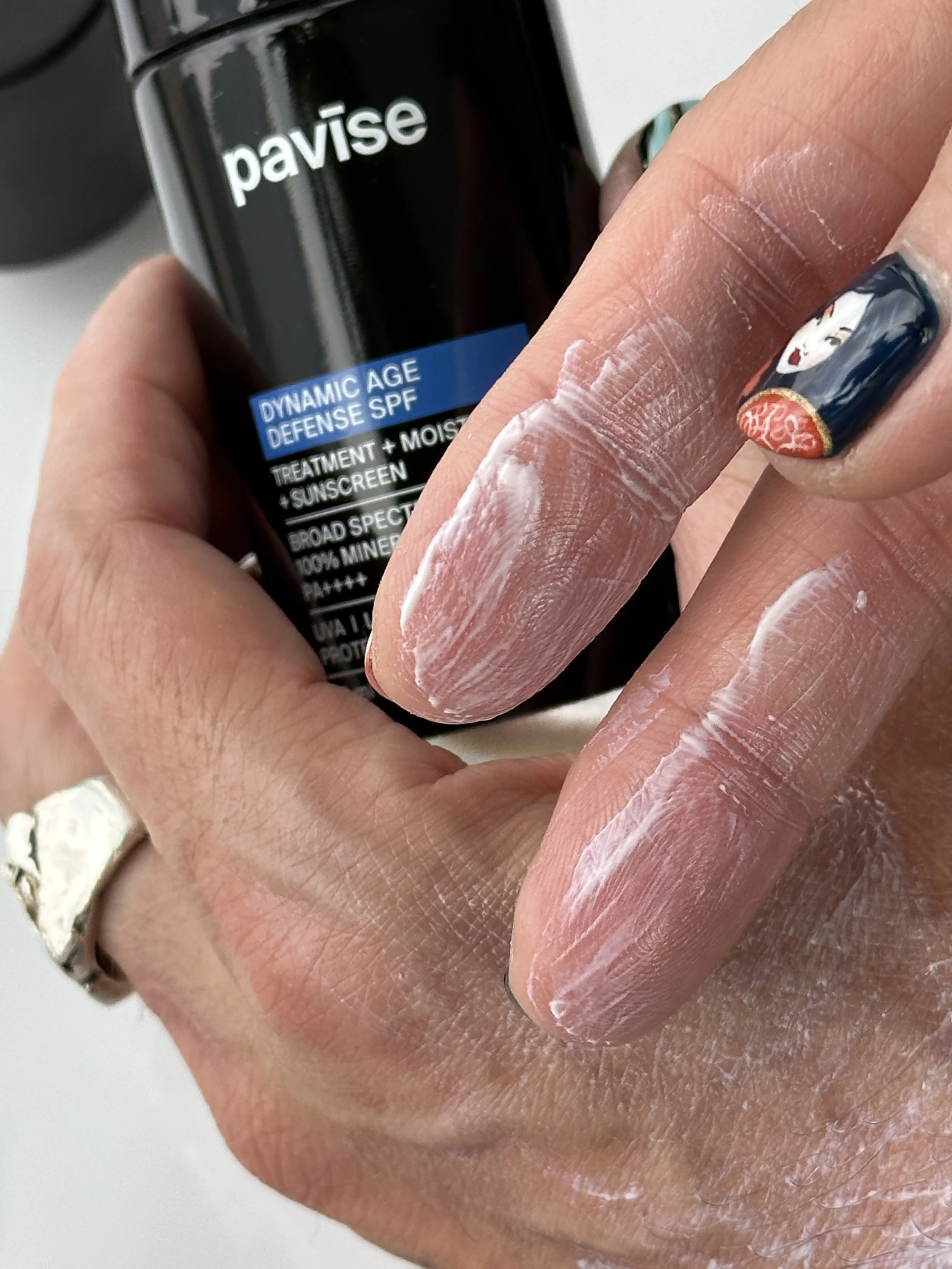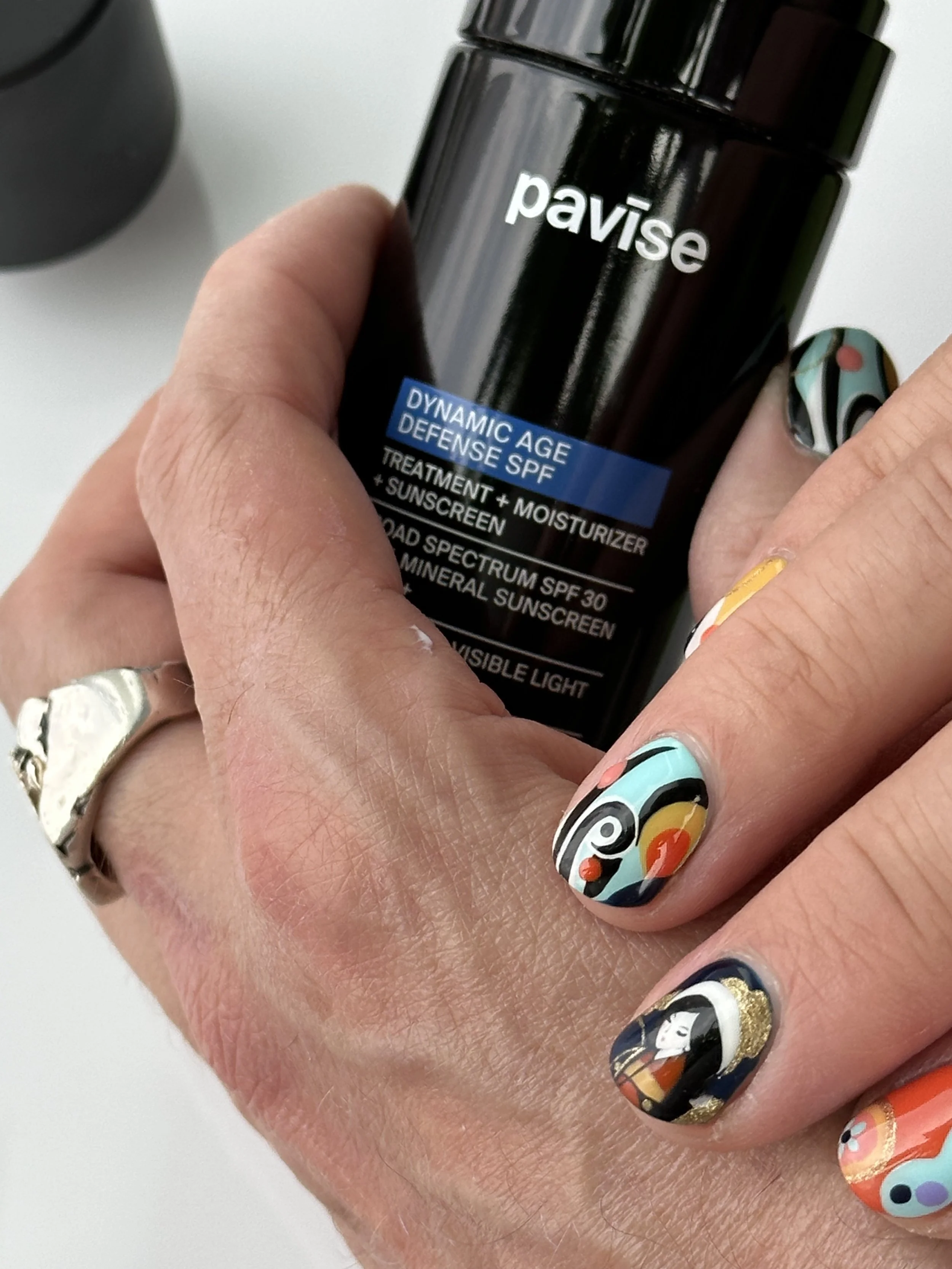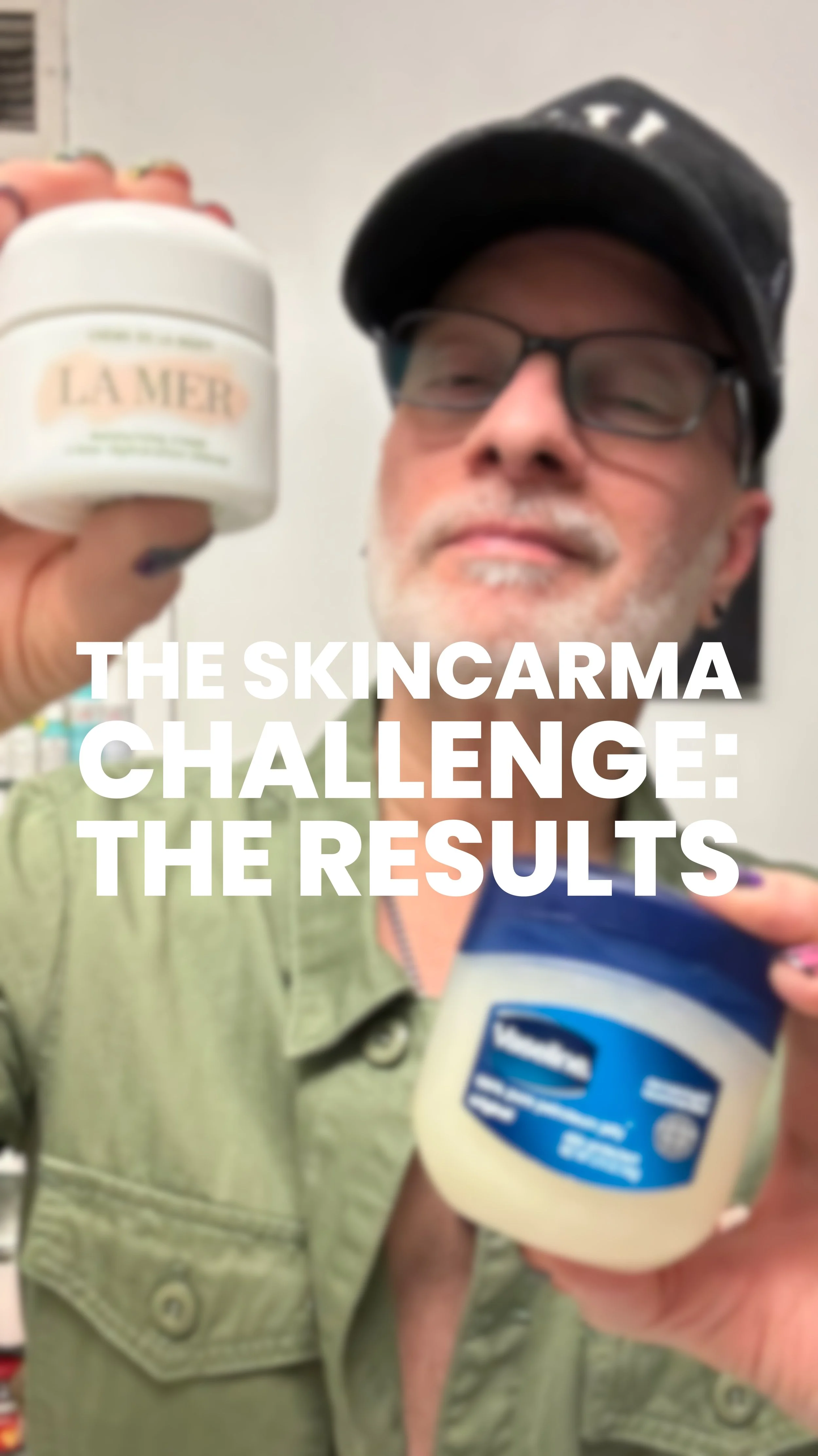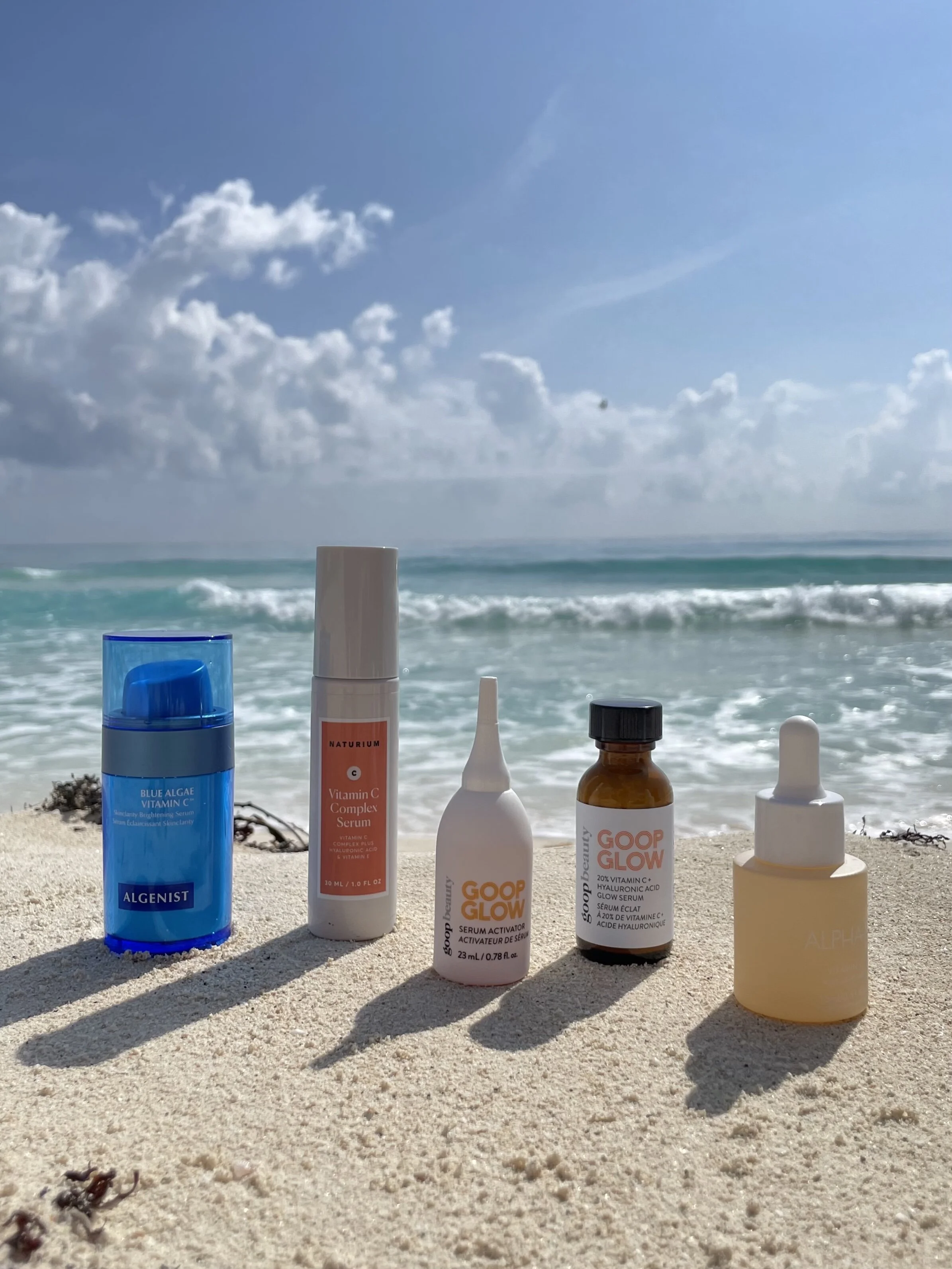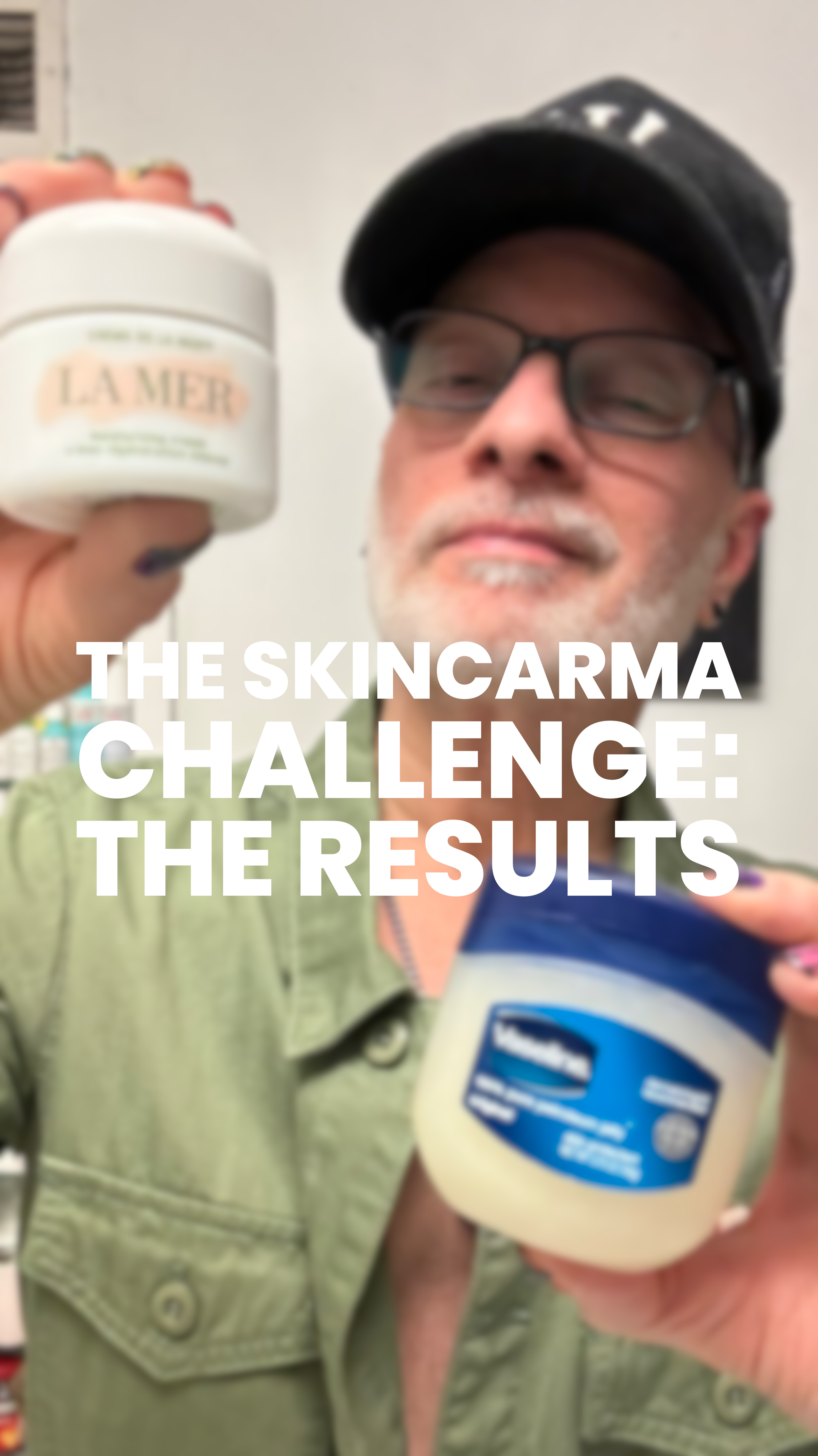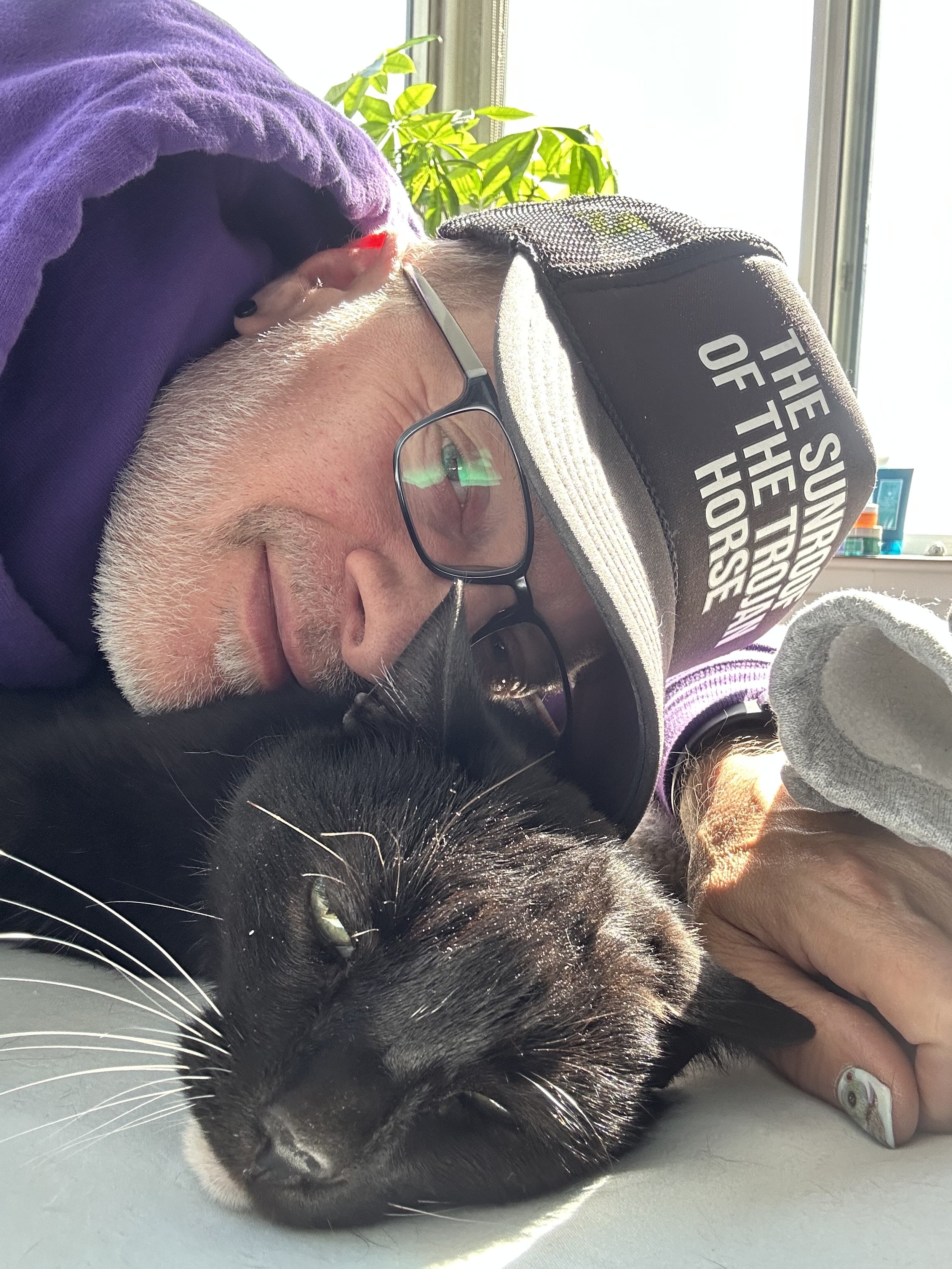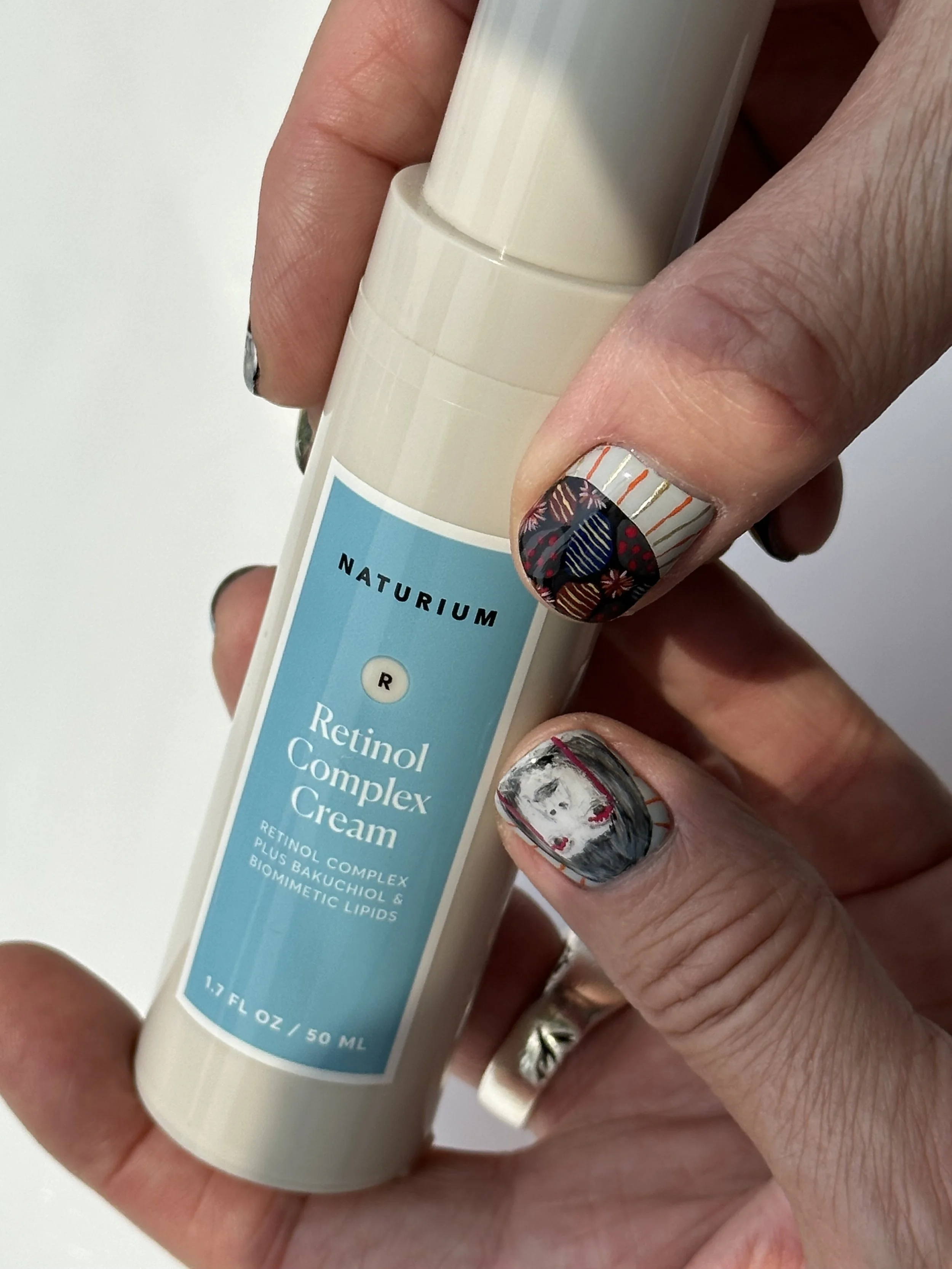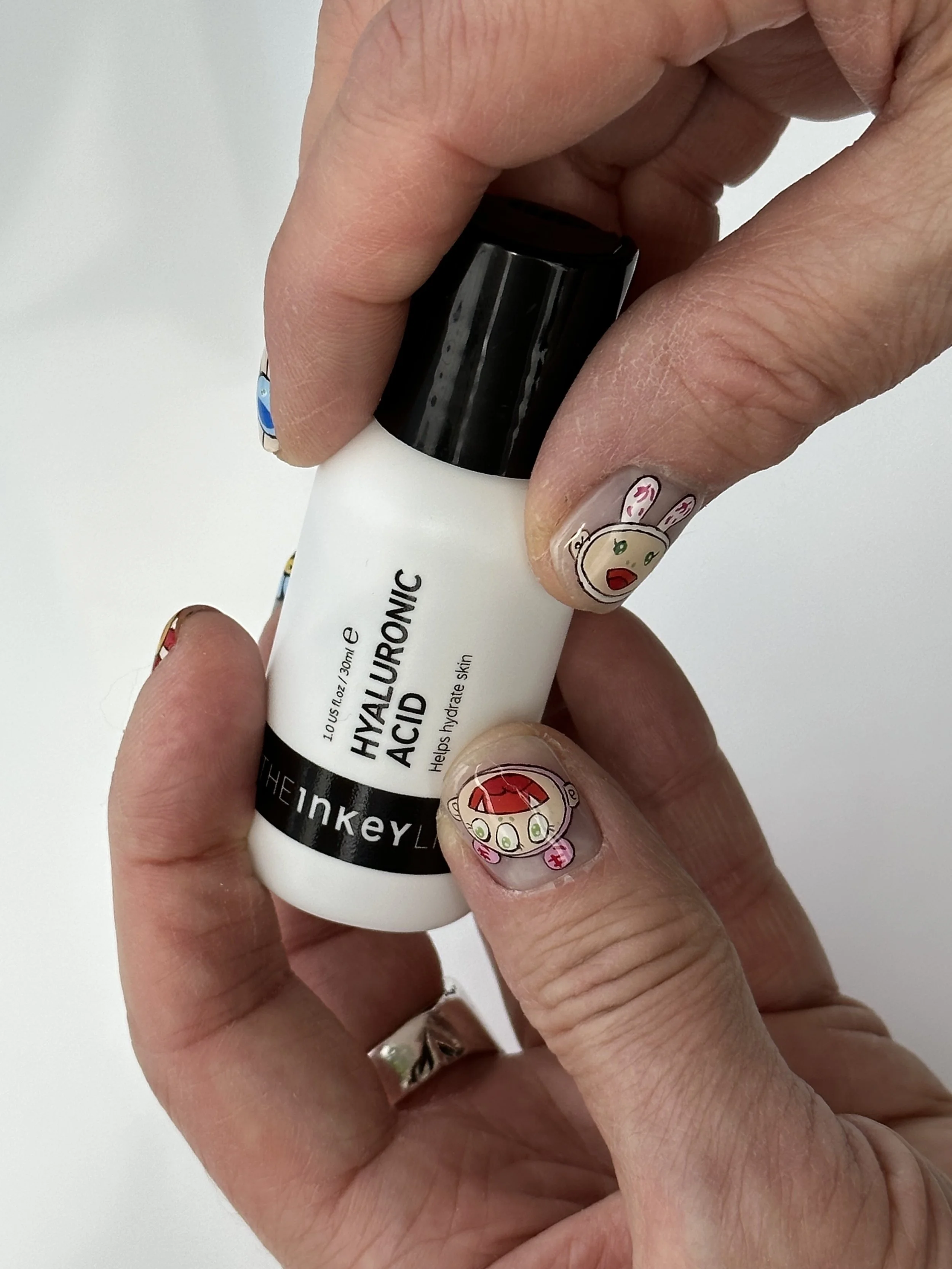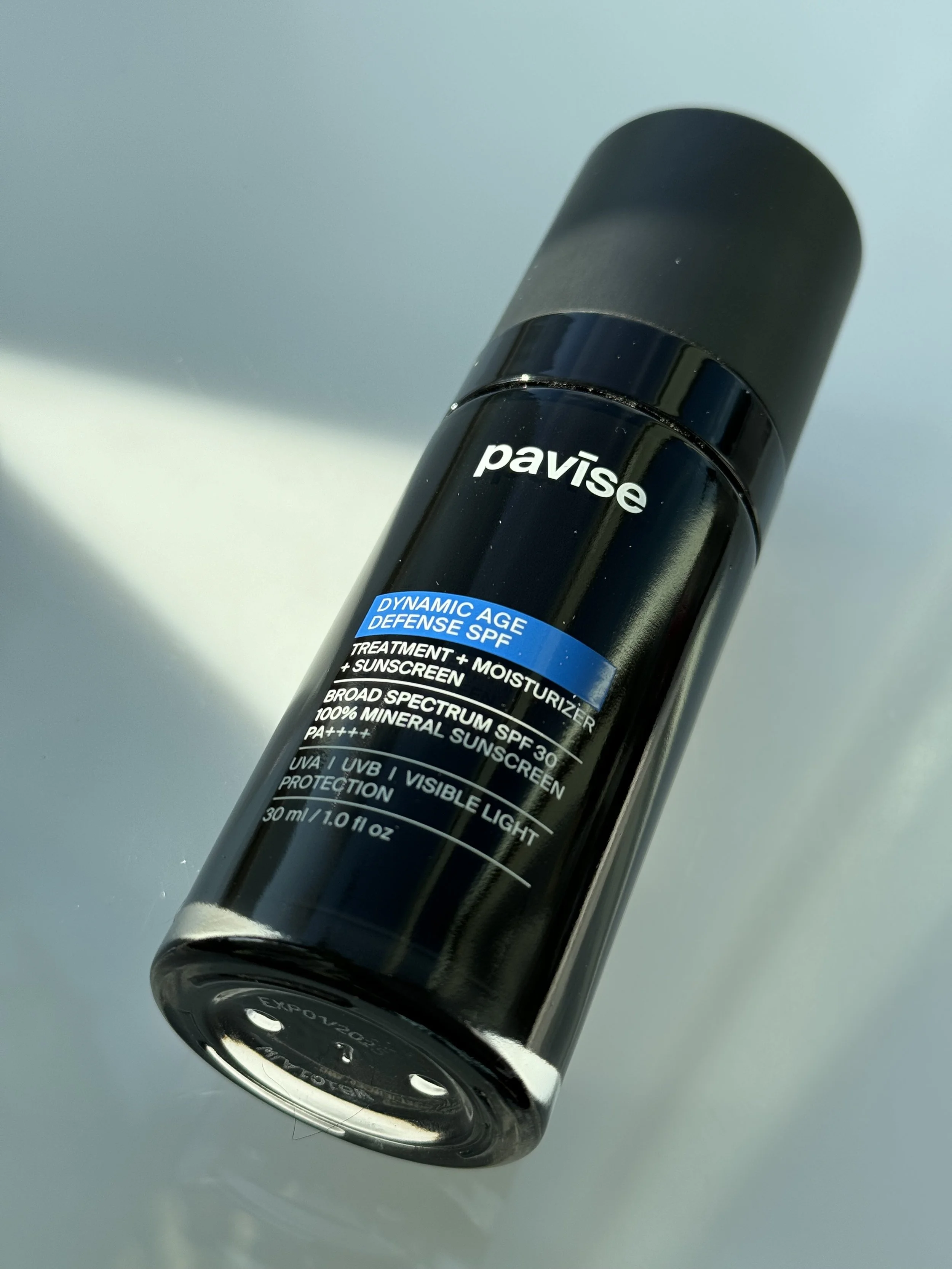PRODUCT REVIEW: PAVISE DYNAMIC AGE DEFENSE SPF 30 MINERAL SUNSCREEN - Are mineral sunscreens better? What are the pros & cons of mineral sunscreen? Do all mineral sunscreens leave a white cast?
PAVISE DYNAMIC AGE DEFENSE SPF 30 MINERAL SUNSCREEN
I’m obsessed with sunscreens. There, I said it. My name is Carmine and I’m addicted to SPF!
I love trying new facial sunscreens and nothing excites me more than sunscreen product innovation. Which is kind of weird because most of the innovation in suncare comes from outside the US.
A-Beauty sunscreens are a literal global phenomenon. I’ve never met a Japanese sunscreen that didn’t blow my mind. Not surprisingly, one of my all-time faves is the Skin Aqua Super Moisture Milk.
In fact, just this week I got my hands on the Shiseido Anessa Perfect UV Sunscreen Mild Milk SPF50+ for sensitive skin. Similar to the iconic Skin Aqua sunscreen milk, which I’ve reviewed on the blog here, the Shiseido one is ridiculously lightweight and very likely to be the one I reach for on the hot, humid summer days ahead.
And even though there’s been limited and relatively unexciting innovation in UV filters in the US over the past 30 years or so, there’s still been innovation in textures – much of it inspired by popular J-Beauty sun milks. More important than cool, fun textures, the innovation has come in the ingredients that complement the UV protection, particularly antioxidants.
I’ve long asserted that my secret for healthy, youthful skin is not merely sunscreen alone, but the combination of high levels of both sunscreen and antioxidants in my morning skincare routine. Skincare brands which market their sunscreens very rarely take that seriously.
Which is one reason I believe the new Pavīse Dynamic Age Defense SPF 30 Mineral Sunscreen is perhaps the best anti-aging cream on the market today. It’s made with mineral sunscreen filter innovation that is 100% transparent on all skin tones. And, a powerful cocktail of antioxidants boosts its protection against photoaging. More on this exciting new product below!
THE BEST SUNSCREENS FOR FACE
I’ve often said that I think skincare marketers miss the mark when they push all manner of “anti-aging” products while neglecting the single most effective anti-aging cream available: a facial sunscreen.
If you start with the premise that a sunscreen is anti-aging because it prevents the number one cause of skin aging – photodamage, aka sun damage – then little else matters. Including all of those fancy $300 anti-aging creams that brands push with their big marketing budgets.
Have you every wondered, How much of aging is due to sun damage? The answer may surprise you. And If it does, the reason is very likely because you haven’t heard the truth from beauty marketers. After all, they spend billions of dollars every year to spin messaging about underwhelming product innovation and faux anti-aging complexes thought up in marketing brainstorming sessions. I know because I’ve been in them!
The answer is up to 90% of the signs of aging is due to sun damage.
“Responsible for 90 percent of visible changes to the skin, photoaging is a direct result of cumulative sun damage you’ve been exposed to throughout your life.”
- The Skin Cancer Foundation
PRODUCT REVIEW: THE INKEY LIST POLYGLUTAMIC ACID DEWY SUNSCREEN SPF 30
According to the Skin Cancer Foundation, “Wrinkles, fine lines and pigmentation are inevitable skin woes that often appear as we age. While we like to place blame on getting another year older, the main culprit is photoaging — damage to the skin caused by exposure to sunlight and ultraviolet (UV) light. Responsible for 90 percent of visible changes to the skin, photoaging is a direct result of cumulative sun damage you’ve been exposed to throughout your life.”
Did that 90% figure surprise you?
It actually still surprises me! In all the years I worked in-house at Kiehl’s I never heard that. Though we did always espouse the importance of a daily sunscreen – “even on cloudy, seemingly sunless days.” That said, the conversation never focused on the fact that the anti-aging creams and wrinkle serums we dreamt up were no where near as effective as the facial sunscreens we already offered.
And in the years since, I’ve had numerous conversations with the brands I’ve consulted for about the need to classify sunscreen under the anti-aging umbrella. But in many ways it’s an uphill battle. The anti-aging category is something else entirely. Look at any brand’s product catalogue and you’ll see that their sunscreens are among the least expensive products they offer, costing little more than a face cleanser. Those anti-aging face creams made with nonsensical complexes have correspondingly nonsensical prices – often approaching $300!
PRODUCT REVIEW: CERAVE HYDRATING SHEER SUNSCREEN SPF 30 FOR FACE AND BODY
Take Lancôme as an example. The brand’s popular UV Expert Defense SPF 50+ Primer & Moisturizer is a mere $48 – cheap relative to Lancôme’s over-priced, over-hyped $270 anti-aging cream for wrinkles, the Absolue Soft Cream Moisturizer with Grand Rose Extracts.
Despite the game-changing rose extract and the fact that the brand claims Absolue Soft Cream targets “wrinkles, dullness, dryness, fine lines, uneven skin texture, uneven skin tone,” the closest Lancôme comes to proving it has any effect on signs of aging is the assertion that “90% agree fine lines are visibly reduced .” And that’s based on consumer perception, not clinical evaluation. The clinical evaluation for the product on lines and wrinkles showed a mere -13% reduction in lines.
There’s just nothing exceptional about the formula. And the “anti-aging” category is packed with fake, over-priced anti-aging creams like it. Dr. Barbara Sturm’s $360 Super Anti-Aging Face Cream does nothing to address signs of aging. It doesn’t prevent them, it doesn’t diminish them. And she doesn’t even claim it does. Dior’s popular $175 Capture Totale Intensive Night Restorative Crème is equally underwhelming – and just plain ridiculous.
PRODUCT REVIEW: PAULA'S CHOICE TRIPLE ACTIVE TOTAL REPAIR SERUM
It’s not to say that sun filters like Zinc Oxide, Avobenzone and Homosalate are the only skincare ingredients that have an effect on signs of aging. This is where antioxidants come into play.
Vitamin C, Niacinamide, Retinol (a form of Vitamin A), and a whole slew of antioxidant extracts like Resveratrol, Green Tea Extract and Ferulic Acid, can help to prevent and correct multiple signs of aging – including the appearance of surface lines and wrinkles, sagging skin, uneven skin tone, dark spots, sun spots and other forms of hyperpigmentation.
What’s the best antioxidant face serum for aging skin? The best antioxidant serum I’ve come across this year is the new Paula’s Choice Triple Active Total Repair Serum. It’s truly anti-aging. As I said in my review of it here, I love its antioxidant complex of Retinyl Propionate, Niacinamide and Hexylresorcinol – all at high concentrations. No fake complex names, just proven results. And it’s $48. You can get seven of them for the price of Barbara Sturm’s jar of nonsense!
Before I get to my product review of the exceptionally groundbreaking Pavīse Dynamic Age Defense SPF 30 Mineral Sunscreen just below, I want to explore the differences between sunscreen filters, the pros and cons of mineral sunscreens – and a bit more about that dreaded white cast…
I’M LITERALLY OBSSESSED WITH THIS SUNSCREEN
1. Are mineral sunscreens better than chemical?
Yes, mineral sunscreens are generally considered better than chemical sunscreens.
Mineral sunscreens use zinc oxide or titanium dioxide as the active ingredients to physically block UV rays, while chemical sunscreens absorb UV rays. This means mineral sunscreens sit on top of the skin, while chemical sunscreens penetrate the skin.
Studies have found that some of the chemicals in traditional sunscreens, like oxybenzone, may be absorbed into the bloodstream and have negative health effects. In contrast, the mineral active ingredients in mineral sunscreens are considered safer and are better tolerated by sensitive skins.
Mineral sunscreens are more environmentally friendly since the zinc oxide and titanium dioxide particles do not enter water systems or ecosystems as the chemicals in chemical sunscreens do.
Overall, it is purported that mineral sunscreens may provide better and safer protection while avoiding some of the potential health concerns raised about chemical sunscreens. However, both types of sunscreen, when properly applied, effectively prevent sunburn and reduce the risk of skin cancer.
Sources: https://pubmed.ncbi.nlm.nih.gov/32689932/; https://www.cbc.ca/news/canada/british-columbia/mineral-sunscreens-not-recommended-by-consumer-reports-what-makes-them-better-1.5208101;
https://www.cmaj.ca/content/192/50/E1654 [7] https://www.allure.com/story/mineral-vs-chemical-sunscreen
2. What are the pros and cons of mineral sunscreen?
Some of the pros of mineral sunscreen include:
- They use physical active ingredients like zinc oxide or titanium dioxide that sit on the skin surface and physically block UV rays instead of absorbing them like chemical sunscreens. This is considered a safer and more natural mechanism of sun protection.
- Studies suggest mineral sunscreens are absorbed into the bloodstream to a far lesser degree than chemical sunscreens, making them a potentially safer option.
- Mineral sunscreens are often considered more environmentally friendly since the physical blockers do not enter water systems or ecosystems like chemicals in chemical sunscreens.
Some of the cons of mineral sunscreens include:
- They tend to be thicker and often leave a white residue on the skin, particularly darker, melanin-rich skin tones, though tinted mineral sunscreens aim to minimize this.
- They may be less cosmetically elegant and harder to spread evenly compared to chemical sunscreens.
- Mineral sunscreens are generally more expensive than chemical sunscreens.
Sources: https://pubmed.ncbi.nlm.nih.gov/32689932/; https://www.cbc.ca/news/canada/british-columbia/mineral-sunscreens-not-recommended-by-consumer-reports-what-makes-them-better-1.5208101;
https://www.cmaj.ca/content/192/50/E1654 [7] https://www.allure.com/story/mineral-vs-chemical-sunscreen
3. Do all mineral sunscreens leave a white cast?
Most mineral sunscreens containing zinc oxide or titanium dioxide can leave at least some degree of white cast on darker skin tones, though tinted options aim to minimize this.
Although newer mineral sunscreens are generally marketed as being less likely to leave a white cast, many product reviews and dermatologists indicate that they still have the potential to leave some degree of whitening on skin of color.
Based on mixed evidence, it seems fair to say that while many mineral sunscreens aim to reduce the white cast effect, most will still leave at least a slight white cast for some users, particularly those with darker skin tones. Improved formulations and tinted options can help minimize the effect but may not fully eliminate it for all.
And, very often, mineral sunscreens with an elegant feel and a minimal white cast often achieve these results through the use of chemical fillers and are not true, 100% mineral sunscreens.
Sources: NBC News: 9 best sunscreens for oily skin, according to experts; The New York Times: The Best Reef-Safe Sunscreen; Health.com: This Anti-Aging Mineral Sunscreen Is Effective, Gentle, and Doesn't Leave a White Cast
4. Which type of sunscreen doesn't leave a white cast?
If you are concerned with the potential that a sunscreen will leave a white cast, it is best to seek out chemical sunscreens, rather than mineral, or physical, facial sunscreens. Chemical sunscreens rarely leave a white film on the skin as the chemical sun filters are absorbed by the skin, rather than sitting on top of the skin as mineral filters are designed to do.
Mineral sunscreens that use zinc oxide or titanium dioxide as active physical UV blockers have the potential to leave some degree of white cast on the skin, though improved formulations and tinted versions aim to minimize this effect.
Even while many brands market their sunscreens as “not leaving a white cast,” dermatologists and users still report at least some degree of residue particularly for users with darker skin tones.
Options with improved formulas, tints, or additional ingredients likely provide the best chance of minimizing a white cast effect for the most people.
And, importantly, the new Pavise Dynamic Age Defense SPF 30 Mineral Sunscreen relies on breakthrough technology that renders it transparent on all skin tones.
Sources: Kiehl’s: “How To Use Hyaluronic Acid & Vitamin C Together” https://www.kiehls.com/skincare-advice/how-to-use-hyaluronic-acid-and-vitamin-c-together; Procoal: “How to Layer Hyaluronic Acid and Vitamin C”https://procoal.co.uk/blogs/skincare/how-to-layer-hyaluronic-acid-and-vitamin-c; Timeless Skin Care: “Why Hyaluronic Acid & Vitamin C Work Well Together” https://www.timelessha.com/blogs/news/why-hyaluronic-acid-vitamin-c-work-well-together
5. Product Review
Pavise Dynamic Age Defense SPF 30 Sunscreen Review
When I say that the new Pavīse Dynamic Age Defense SPF 30 Sunscreen is “groundbreaking,” I mean it. Look, I’ve been copywriting in beauty for two decades now. I got my start as a skincare copywriter in 2002 when I moved to New York City to work for Kiehl’s. I worked in-house on the brand for about seven years before departing to start my own company.
In the years since, I’ve worked on some of the coolest skincare and beauty brands in the world, including Dr. Jart, Dr. Dennis Gross, Skinfix, Sephora and, yes, Pavīse. I have named hundreds of products, written packaging copy for them, and even crafted the initial product concepts that kicked off development and marketing.
In my 20+ years as a copywriter, I have used the word “ground-breaking” numerous times. But it always felt hyperbolic. Until now. When I say that the technology behind Pavīse’s Dynamic Age Defense SPF 30 Sunscreen is ground-breaking, it truly is. No mineral sunscreen that’s come before it uses 100% true mineral Zinc Oxide while being transparent on all skin tones.
The last time I used the term ground-breaking and meant it was when I was working on the hair care brand, Living Proof. The brand was launched with technology so innovative that it revolutionized the treatment of frizzy hair – a concern that hadn’t seen innovation beyond variations of silicone in 30 years.
Not coincidentally, the technological innovation behind both Living Proof and Pavīse was invented by scientists at MIT – the Massachusetts Institute of Technology. In the case of Living Proof, the iconic institution’s scientists invented a new molecule that coats frizzy hair to smooth out hair strands. Instead of relying on heavy silicone molecules that weigh hair down to minimize frizzing, they took a “first principles” approach from physics. What causes a hair strand to appear frizzy and how can we correct that anomaly?
Similarly, the scientists behind Pavīse sought out to solve a problem that no other brand had truly solved outside of workarounds like pigments. They asked, What causes the Zinc Oxide molecule to leave a white cast on the skin and limit its use on skin of color? How can we correct that?
Instead of adding colorants, pigments, and fillers to the formula, or relying on micronized or nano Zinc Oxide or Titanium Dioxide, they invented a new Zinc Oxide molecule called DiamondCore® Zinc Oxide.
CATCH IT IN ACTION ON
MY TIKTOK!
How does Pavīse’s proprietary Zinc Oxide molecule work? Well, the brand’s DiamondCore® zinc oxide molecule is “diamond-augmented” to reflect, scatter and absorb the sun’s UV rays more efficiently. Its chemical structure relies on the physics of light refraction to disperse light in a way that appears transparent on the skin, rather than white. Hence, a Zinc Oxide molecule that leaves no white cast.
And according to the brand, the DiamondCore® technology is a “Diamond-augmented zinc oxide solar filter that provides 5x better UVA/UVB/VL defense and eradicates 80% of solar-generated ROS, particles that damage skin.”
What is ROS? Well, ROS, or solar-generated Reactive Oxygen Species, are highly reactive molecules that are generated in the skin upon exposure to sunlight. When UV radiation from the sun reaches our skin, it leads to the production of ROS, which include superoxide radicals, hydrogen peroxide, and hydroxyl radicals.
While the production of ROS is a normal physiological process in the body, excessive ROS formation can cause damage to cellular structures such as proteins, lipids, and DNA. This oxidative stress can contribute to the aging process, as well as sunburn, photoaging, and even skin cancer.
Then product delivers “age defense” and IMO is perhaps the best anti-aging cream, serum or otherwise available on the market today. In fact, Pavīse describes the Dynamic Age Defense SPF 30 Sunscreen as treatment, moisturizer, and sunscreen in one.
While the mineral sunscreen filter technology is ground-breaking, the Pavīse scientists didn’t stop there. They understood that the best defense against photoaging goes beyond sunscreen. And that includes, most importantly, antioxidant defense.
I have never seen as robust a complex of antioxidants in a sunscreen as I’ve found in the Pavīse Dynamic Age Defense SPF 30 Sunscreen. The formula contains what the brand identifies as a Photoaging Defense Cocktail. This proprietary antioxidant complex combines Niacinamide, Astaxanthin, Pycnogenol, Silymarin, Licorice Root Extract, and Tranexamic Acid and “combats solar-induced oxidative stress and environmental damage.”
The texture of the Dynamic Age Defense SPF 30 Sunscreen is light and creamy. Massage it into your skin and it blends in instantly, not over time through absorption. It’s simply a perfect mineral sunscreen and the perfect anti-aging cream – the best protection from photoaging on the market today.
6. Pros & Cons
What I like about it: The Pavīse Dynamic Age Defense SPF 30 Sunscreen is truly ground-breaking and the best mineral sunscreen for dark skin and, in fact, all skin tones. With its innovative, proprietary DiamondCore® Zinc Oxide technology, it’s literally 100% transparent on all skins – without colorants, pigments or fillers. In addition to its superior UV protection against sun damage, I love its robust antioxidant complex.
What I don’t like about it: Honestly, I like everything about it.
Who it’s for: All skin types and skin tones.
SHOP THE BLOG: Want to try it for yourself? Purchase the Pavīse Dynamic Age Defense SPF 30 Sunscreen for $148 here.
The Ingredient List of the Pavīse Dynamic Age Defense SPF 30 Sunscreen:
 aox|emo, Astaxanthin
aox|emo, Astaxanthin  aox, Bisabolol
aox, Bisabolol  so, Caprylic/Capric Triglyceride emo, Cetyl Alcohol emo|vc 2 2, Diamond Powder abrasive/scrub, Dimethicone emo 0 1, Dimethicone Crosspolymer vc, Disodium EDTA chel, Ethylhexylglycerin pres, Glycerin
so, Caprylic/Capric Triglyceride emo, Cetyl Alcohol emo|vc 2 2, Diamond Powder abrasive/scrub, Dimethicone emo 0 1, Dimethicone Crosspolymer vc, Disodium EDTA chel, Ethylhexylglycerin pres, Glycerin  sii|h 0 0, Glyceryl Stearate Citrate emo|emu, Glycyrrhiza Glabra (Licorice) Root Extract
sii|h 0 0, Glyceryl Stearate Citrate emo|emu, Glycyrrhiza Glabra (Licorice) Root Extract  so|sb, Isostearic Acid surf|emu, Niacinamide
so|sb, Isostearic Acid surf|emu, Niacinamide  cci|sb|aacne|h, Octyldodecanol emo|perf, Phenoxyethanol pres, Pinus Pinaster Bark Extract
cci|sb|aacne|h, Octyldodecanol emo|perf, Phenoxyethanol pres, Pinus Pinaster Bark Extract  aox, Polyglyceryl-3 Distearate emu, Polyhydroxystearic Acid emu, Propanediol solv|h, Silybum Marianum Fruit Extract, Squalane
aox, Polyglyceryl-3 Distearate emu, Polyhydroxystearic Acid emu, Propanediol solv|h, Silybum Marianum Fruit Extract, Squalane  sii|emo 0 1, Tocopheryl Acetate aox 0 0, Tranexamic Acid
sii|emo 0 1, Tocopheryl Acetate aox 0 0, Tranexamic Acid  sb|so, Triacontanyl Pvp h|vc, Water solv, Xanthan Gum vc
sb|so, Triacontanyl Pvp h|vc, Water solv, Xanthan Gum vcIS IT REALLY A SCAM?
Find out on my TikTok channel.
MY TOP VITAMIN C PICKS FW21: NEW VITAMIN C SERUMS I’M CRUSHING ON FROM ALGENIST, NATURIUM AND MORE
WATCH MY VIDEO REVIEW
THE BEST NIACINAMIDE SERUMS FOR CLOGGED PORES AND A BRIGHTER COMPLEXION
ON MY YOUTUBE CHANNEL HERE
WATCH MY VIDEO REVIEW OF
SKINCARE HACKS: GLYCOLIC ACID IS THE NATURAL DEODORANT THAT WORKS!
ON MY YOUTUBE CHANNEL HERE
WATCH MY VIDEO REVIEW OF
MY FAVORITE HUMECTANT SERUMS FROM PAULA'S CHOICE, THE INKEY LIST, GHOST DEMOCRACY AND MORE
ON MY YOUTUBE CHANNEL HERE
WATCH MY VIDEO REVIEW
COOL CLEAN FACIAL SUNSCREENS TO KEEP US SAFE AND SMILING IN THE SUN!
ON MY YOUTUBE CHANNEL HERE
WATCH MY VIDEO REVIEW
THE OPULUS BEAUTY LABS RETINOL SYSTEM – THE COOLEST RETINOL INNOVATION I’VE EVER SEEN
ON MY YOUTUBE CHANNEL HERE
WATCH MY VIDEO REVIEW
MY 2021 VITAMIN C PICKS + THE BEST VITAMIN C SERUMS TO BRIGHTEN UP THE COMPLEXION!
ON MY YOUTUBE CHANNEL HERE
WATCH MY VIDEO REVIEW OF
MY WINTER SKIN SAVIOR: SKINFIX BARRIER+ LIPID REPLENISHING SKINCARE
ON MY YOUTUBE CHANNEL HERE
WATCH MY VIDEO REVIEW
A COMPLETE K-BEAUTY ROUTINE WITH THE BEST FACIAL SKINCARE FROM PURITO, COSRX, MISSHA & MORE!
ON MY YOUTUBE CHANNEL HERE
WATCH MY VIDEO REVIEW
THE YEAR’S BEST VITAMIN C SERUMS WITH PAULA'S CHOICE, SUNDAY RILEY, THE INKEY LIST AND MORE!
ON MY YOUTUBE CHANNEL HERE
WATCH MY VIDEO REVIEW OF
A SELFCARE SUNDAY NOT FOR THE FAINT OF HEART – WITH THE PAULA’S CHOICE 25% AHA PEEL!
ON MY YOUTUBE CHANNEL HERE


